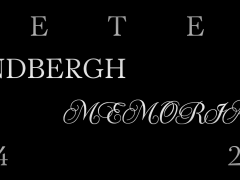In grid we trust: Emil Ruder aka the iconic pioneer of Swiss Style
“Typography has one plain duty before it and that is to convey information in writing” once noted Emil Ruder, one of the pillars of what is called International Typographic Style movement, destined to conquer graphic design ever since it was emerged from Switzerland, back in the 1950’s.
A friend and associate of Armin Hofmann, Adrian Frutiger (whose Univers sans-serif typeface was Ruder’s favorite) and Müller Brockmann, he is regarded one of the most important figures in design and it is his grid-obsessed philosophy that influenced web design as we experience it.
Bringing a holistic approach to designing and teaching that consisted of philosophy, theory and a systematic practical methodology for Ruder graphic design and type design have to function properly, promoting “the good and the beautiful in word and image and to open the way to the arts.”
A Swiss Style visionary Ruder taught that typography's purpose was to communicate ideas through writing, especially in sans-serif mode, and he was totally committed to the discipline of letterpress typography.
Born in Zurich, Switzerland on March 20, 1914, Ruder entered his adventures in design as a teenager.
He was 15 years old when he took a compositor’s apprenticeship before immersing himself into the principles of Bauhaus and Jan Tschichold’s New Typography during his years studying at Zurich’s School of Arts and Crafts.
A scholar by default, Ruder was named a typography instructor at the Schule für Gestaltung, Basel (Basel School of Design) in 1947.
There he met the artist-printer Armin Hofmann and their year-long collaboration kicked off.
Their teaching achieved an international reputation by the mid-1950s and by the mid-1960s their courses were maintaining lengthy waiting lists.
Ruder and Hofmann developed a program structured on principles of objectivity in designthat changed everything forever.
Ruder encouraged the few, selected students to care about the maths of the visual communication, literally establishing the massive Swiss Design movement.
For Ruder what matters the most in type design is precision, proportions and legibility. Type is here to communicate and that is all for Ruder.
A lover of asymmetry himself, Ruder’s clear and concise designs “developed sensitivity to negative or unprinted spaces, including the spaces between and inside letterforms” per Philip Meggs.
A contributing writer and editor for the then-popular trade publication Typografische Monatsblätter (Typographic Monthly) he was one of the pioneers to discard all of the conventional rules of traditional typography establishing new laws of composition more in accord with the post war era.
From 1946, Emil Ruder slowly emerged in Typografische Monatsblätter as an exponent of Modernism. Between 1957 and 1959 he contributed a series of four articles with the title 'Wesentliches' (Fundamentals): 'The Plane', 'The Line', 'The Word' and 'Rhythm'.
They formed the basis of his thinking, summed up in 1967 in his magnum opus “Typographie.”
“Emil Ruder was already teaching typography for fifteen years at the Gewerbeschule Basel, when the first article in the cycle Wesentliches appeared in TM” writes Helmut Schmid who designed “Emil Ruder: fundamentals.”
“With fundamentals (Wesentliches), Ruder set creative typography on fundamental ground. The plane, the line, the word, rhythm, the four articles published between 1957 and 1959 in the Swiss TM, appeared also in the German Druckspiegel in 1959 and in 1972 in the Swedish grafisk revy.”
“In this series of articles, free of the confines of any single, narrow, specialized field, Ruder discusses at will the formation principles of typography in relation to the cultures, natural sciences, politics and societies of all times and places” adds Idea magazine’s Kiyonori Muroga, who translated the texts in Japanese.
“In addition, Ruder's fundamental thinking always sheds light on the relationship between human life and technology. Half a century has passed since this work was published. It is precisely because historic styles are today consumed superficially that it is worthwhile to review afresh the attitude the author takes in this work dealing with the principles of the creation of typography in terms of the relationship between society and technology.”
After twenty-five years of teaching, Ruder published his “Typographie: A Manual for Design”, a heavily illustrated book capturing his ideas, methods and approach.
The book represents a critical reflection on Ruder’s teaching and practice as well as a lifetime of accumulated knowledge.
The text was published in German, English and French, by Swiss publisher Arthur Niggli in 1967.
The book helped spread and propagate the Swiss Style, and became a basic text for graphic design and typography programs in Europe and North America.
Considered a masterpiece on typography, the publication is pure design philosophy overdose.
“Through a perusal of other fields we are better placed to understand our own subject matter, in the same way that a small hamlet, only when set against its open surroundings, can be properly viewed and judged” Ruder writes in fundamentals.
“It will be seen that the manifold influences or larger occurances in our daily tasks cannot be ignored.”
Emil Ruder passed away on this day, the 13th of March, in 1970 at the age of 55.
Tags/ typography, type design, grid, adrian frutiger, sans serif, emil ruder, armin hoffman, jan tschichold, basel
































